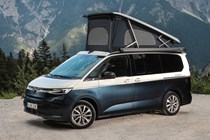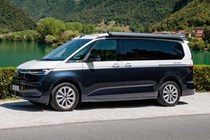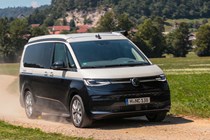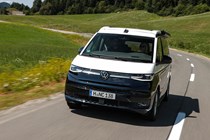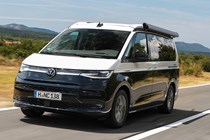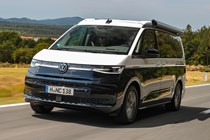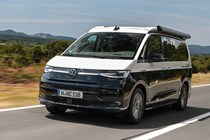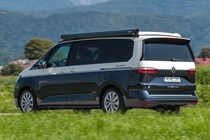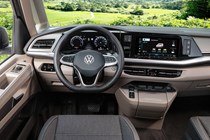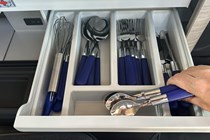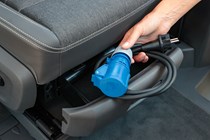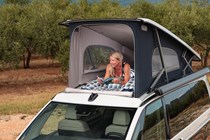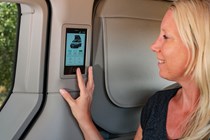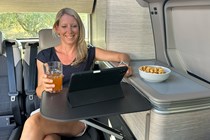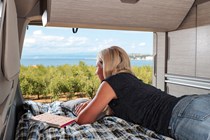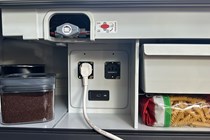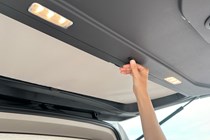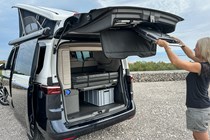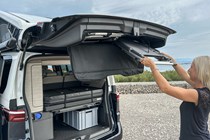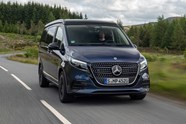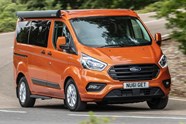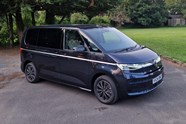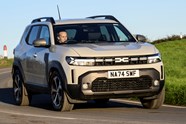
Volkswagen California review
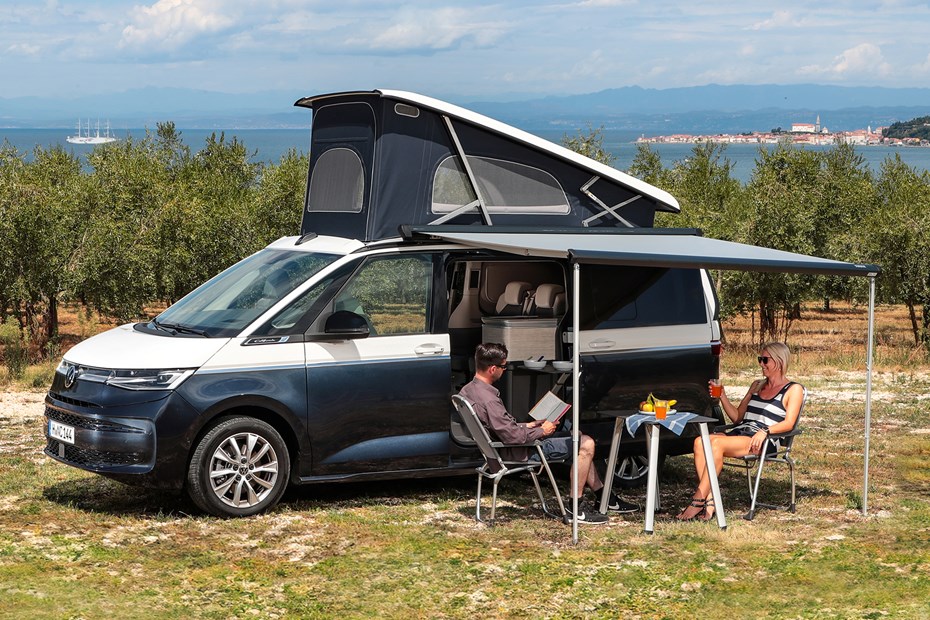
At a glance
| Price new | £66,331 - £83,347 |
|---|---|
| Used prices | £51,252 - £70,400 |
| Road tax cost | £620 |
Get an insurance quote with

|
|
| Fuel economy | 30.2 - 42.2 mpg |
| Miles per pound | 4.4 - 5.4 |
| Number of doors | 4 |
| View full specs for a specific version | |
Available fuel types
Petrol
Diesel
Hybrid
Pros & cons
- Car-based design improves the driving experience
- Sliding doors on both sides for the first time
- Packaging is very clever, making it even easier to use
- Less interior storage than before
- DSG transmission can be jerky and tiresome
- Mercedes Marco Polo offers self-levelling suspension
Volkswagen California Campervan rivals
Overview
Volkswagen has been building California models for three decades, and they have long been some of the best campervans in the business. But this all-new 2024 VW California is the first one that isn’t based on a humble load-lugging commercial vehicle.
Instead, Volkswagen has taken its Multivan people carrier as the basis for the new T7 California – a change that has some interesting implications. Not least of which is the introduction shortly after launch of a plug-in hybrid drivetrain for the first time. Something that’s additionally innovative for being the first VW PHEV to come with 4Motion all-wheel drive.
We’ve followed the story of the new California from its inception right through to the launch test drive event in Europe, where I’ve had the first opportunity to not only cover a couple of hundred miles on the road over three days but also sampled the sleeping arrangements in two different countries.
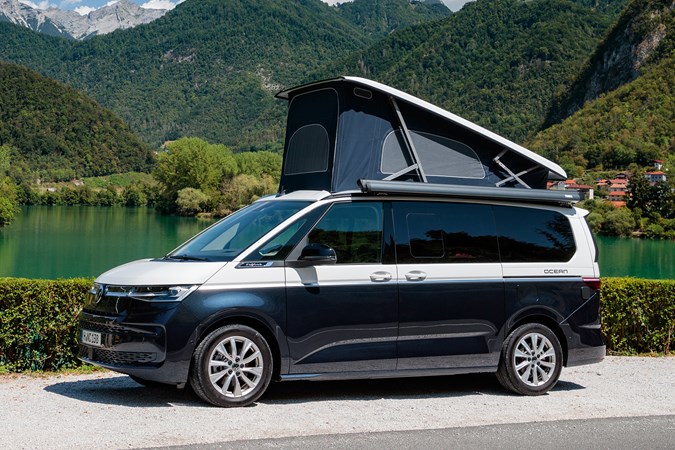
This comes on the back of recent personal experience of the latest Mercedes-Benz V-Class Marco Polo rival campervan, as well as revisiting the out-going VW California 6.1 and completing more than 1,200 miles driving a standard VW Multivan in the weeks leading up to the new California event. We take the business of testing cars at Parkers very seriously.
The move away from the traditional Transporter van origins to the Multivan brings plenty of opportunities for the new California, if also a few challenges. The Multivan’s car-grade platform makes it quieter and better to drive while the use of the longer body variant makes it roomier inside as well. There’s more safety kit, more seating flexibility and, for the first time, a sliding rear door on each side of the vehicle.
This means UK California buyers will no longer have to exit the back of the van into traffic – previous models have only ever had one sliding door, on the British driver’s side – but does create some issues for the California’s legendary interior packaging. After all, the kitchenette has previously taken up almost the entire passenger side of the cabin.
Suffice to say, VW’s designers have risen to the task, and in many respects the new California is far cleverer inside that its predecessor. But there are some compromises, and that pesky Mercedes Marco Polo still has at least one feature the California can’t match.
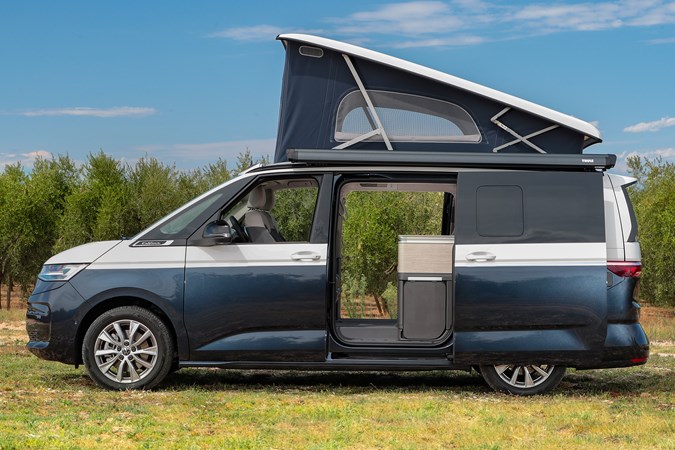
What’s it like inside?
The twin sliding doors are a gamechanger – for space as well as ease of access. The swivelling front seat on the kitchen side now has legroom when you’ve got the cabin set up as a lounge, and by positioning the awning on the left as well, VW has created the opportunity for cohesive al fresco dining. There’s even an externally accessible plug socket for a portable grille.
The awning can be switched to either side, or you could have two (though you’ll have to purchase the second one separately). Made by Thule, the one supplied by VW features an integrated crank handle, which is a neat solution.
The kitchen overlaps the about half the relevant side door opening – still plenty of room to get in and out – with the reduction in footprint largely made possible by switching to a drawer-style fridge similar to that used by the Grand California at the most forward end of the kitchen unit. This is easy to access from the doorway, potentially useful for carting home the shopping as well as a lazy camp life.
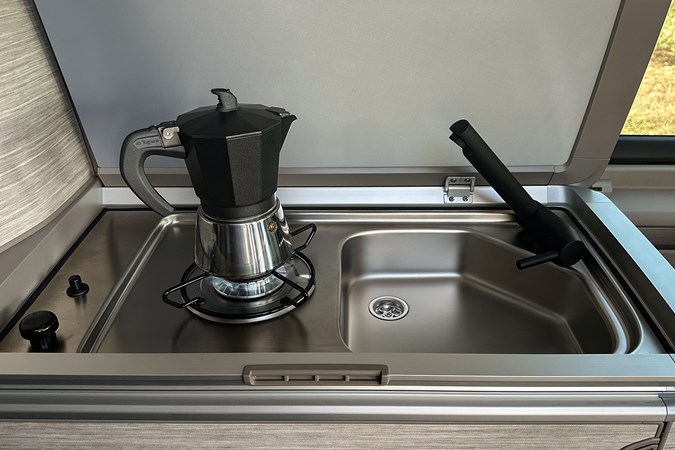
An additional folded surface area lurks at the back of the kitchen area exposed by the door, and this can be mounted in two positions, inside or outside the campervan. As ever there’s a sink and a gas hob, with storage beneath, as well as plug sockets and the gas switch. But not, I think, as much storage as the previous model, due to the fridge.
If you’re a heavy packer, there are further concerns. The outgoing California had a rear bench seat with large drawers underneath, the new one features two individual chairs instead, with much less storage in their respective drawers. There’s no longer a cupboard adjacent to the fridge with a mirror in it, either.
It isn’t totally bad news, however, as the new seats slide around much more flexibly on rails that run the length of the cabin. At a relatively lightweight 22kg each, they can also easily be removed altogether or positioned in tandem if you need to use the available space for a bike or pet carrier.
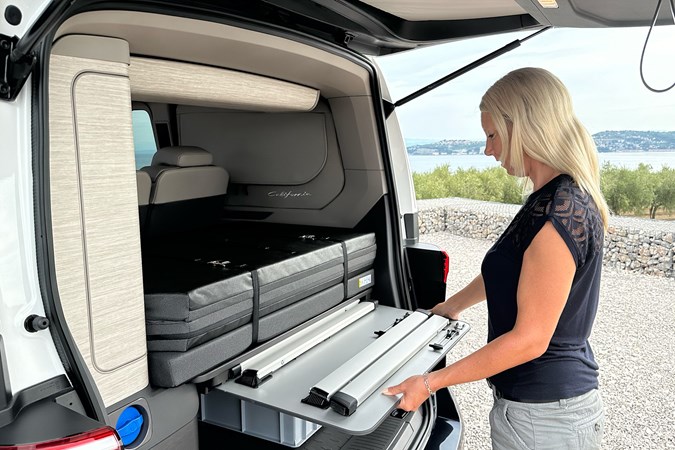
Other positive changes include the built-in dining table slotting into the boot shelf instead of the inside of the sliding door, where it was always a bit of a pain to access. There are large door bins on both sliding doors now instead, clawing back some carrying capacity – helped a large storage pocket replacing the rearmost side window that isn’t already covered by cupboards.
Meanwhile, the chairs hidden in the tailgate have higher backs for greater comfort, and there’s an exterior shower attachment back there for the first time on a California. Large leisure batteries keep it all running even if you’re camping without the electricity hook-up the California also makes possible.
The camping controls are now integrated into the main infotainment touchscreen, but also available via your smartphone or a 5.0-inch touch panel built into the door pillar nearest the rear seats. This is convenient but a little slow to wake up.
The infotainment has also been updated with some new graphical interfaces for functions such as the climate control. I personally find these a little confusing, but they’re intended to make life easier. More of an issue is that I started to experience software issues on day three, seemingly related to Android Auto but will impact the main satnav (which is otherwise rather good to the point it will tell you if you’re in the wrong lane).
There are loads of USB C ports as well as old-school 12v and conventional plug sockets, and an impressive array of lighting. These lights can be controlled from the camping panel, via buttons or by touching most of them directly. And they’re not only dimmable, a neat double-tap on any individual unit will turn all of them off at once. Handy if you’re already up top in bed when you realise you left something on in the cabin.
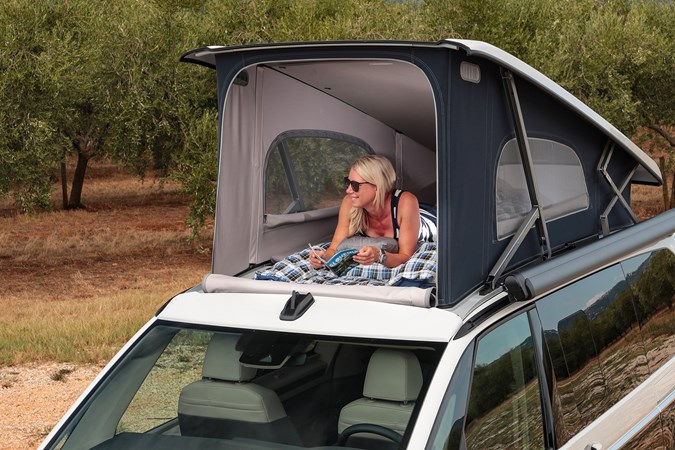
As previously, the California sleeps up to four. The top bed is the comfier, as it has a sprung base, but both arrangements are still comparatively hard. Especially if, like me, you prefer sleeping on your side. The electrically operated pop-up top is noticeably quieter in operation than it was, incidentally, with bigger opening panels as well as fabric that better controls light pollution.
As before there are blinds built into the rear windows while the front doors rely on magnetic fabric panels. These and the new panel for the windscreen are now quilted and dual sided – lighter side facing outwards will hopefully help reflect heat from the interior.
That new windscreen cover replaces the previous built-in blinds and is a little faffy to assemble (it relies on five folding struts and the sun visors to stay in position). But it also keeps the interior darker, so for me that’s a fair exchange.
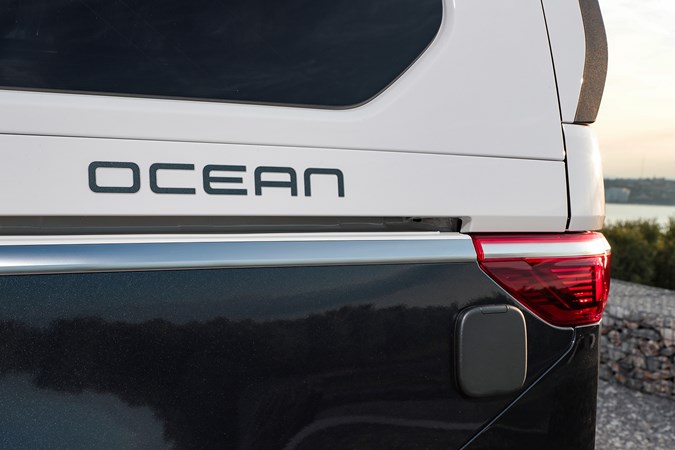
VW California engines
More innovation under the bonnet, as the California moves away from being exclusively powered by diesel in the UK to offering this plus turbo petrol and petrol-electric plug-in hybrid power, the latter combined exclusively with 4Motion all-wheel-drive.
The 245hp plug-in hybrid combines a 1.5-litre turbo petrol with batteries big enough for an as-yet-undisclosed but ‘lengthy’ electric-only driving range, and will be offered on all California variants. However, it’s not going on sale straight away, so for now I’ve only driven the diesel.
This 150hp 2.0-litre TDI will also be offered on all models, and is likely to produce the best real-world fuel economy over long distances. German market technical details suggests this will have WLTP fuel economy figures of around 40-42mpg. In very mixed driving I’ve been seeing mid-30s without trying, which is a reasonable result for something that weighs 2.3 tonnes.
The more highly specified California Coast and California Ocean are also available with a 204hp 2.0-litre TSI turbo petrol. Expect this to be pleasant, bordering on fun, but also rather thirsty. Even the official figures are 10-11mpg lower than the diesel.
All Californias of this generation come with a DSG automatic transmission as standard. They also have an electronic handbrake, making it easier to spin the font chairs around and you no longer have to dance around a lever poking up from the floor.
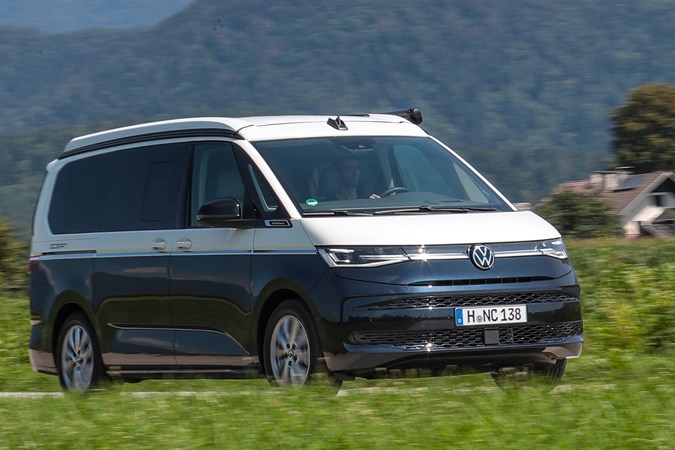
What’s it like to drive?
The new California’s driving experience is a significant step forward over its predecessor in almost every area. Starting with the driving position, which has a much more conventionally angled steering wheel, it is far more car-like than before and requires far less active management on tricky roads.
By this I mean it leans less in the turns and the front is much more predictably grippier. In the old California, it was quite easy to spin the driven front wheels, at times giving it rather a scrabbly unsophisticated nature. Basically, like a van.
This new model puts its power down more smoothly, and can confidently be driven quite quickly if you don’t mind risking your crockery. In other words, very much like a car. Or at least a competent SUV.
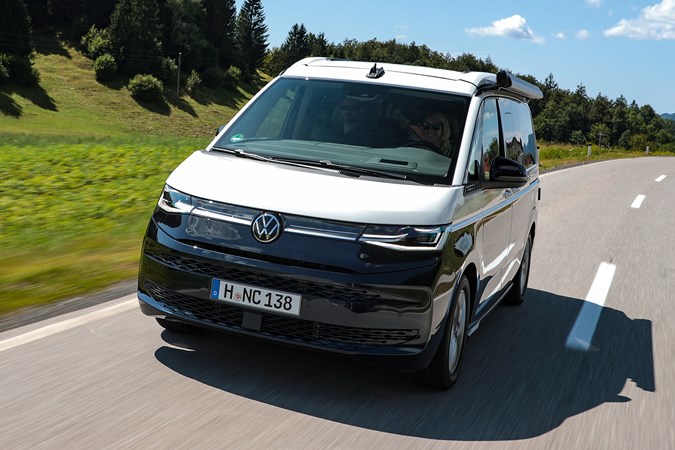
The seven-speed DSG automatic is still a touch disappointing. It can be slow to react and indecisive on the one hand, then snappy and almost too abrupt on the other. The rear-wheel drive Marco Polo with its polished conventional nine-speed automatic retains an edge here.
I also constantly found myself having to work around the nearest windscreen pillar. Even split by a small window these are large and slightly awkwardly positioned for 5ft 11in me, but I did manage to scoot around some exceptionally twisty Slovenian mountain passes without duffing up any bodywork, so they’re not unmanageable.
Another welcome change is the ride comfort, which is much less harsh than before, and the refinement is also better. The new California is quieter under the bonnet and through the air, and its fixtures and fittings don’t rattle as much as they used to. Though they do still rattle.
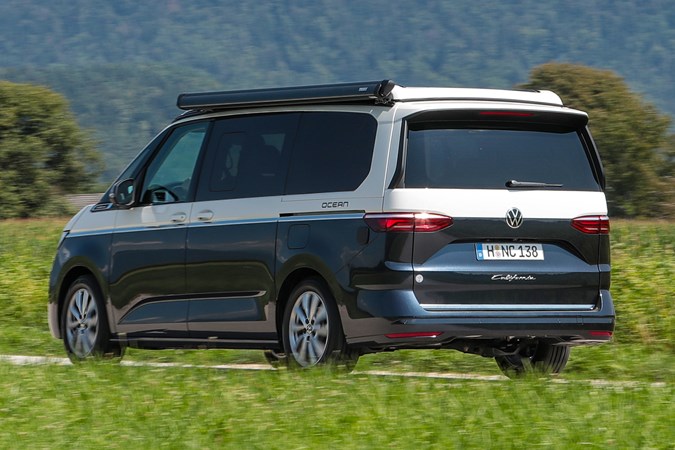
What models and trims are available?
VW’s coming out punching here, with no less than five variants; for context, the Mercedes Marco Polo range has essentially been reduced to one engine and one trim level, plus an AMG styling package. But while there is a trio of Beach models in the production plan, signifying degrees of entry-level, the most basic Beach and Beach Tour versions aren’t coming to the UK, leaving us three trims to pick from. These two entry versions do without a kitchen, making them little more than highly accessorised Multivans.
The Beach Camper, however, gets with a ‘mini kitchen’ that pulls out from the boot space. This qualifies it as a true camper from a homologation perspective but without the costly full integration of its pricier siblings. This is available for UK buyers.
That said, the California Coast and range-topping California Ocean are what most would consider proper California spec, featuring the fully fitted kitchen and all the other super-clever design elements. The difference between these two is defined by recycled seat upholstery and additional equipment for the Ocean. This includes heated front seats, an additional rear storage box, auxiliary air heater and background lighting for the kitchenette.
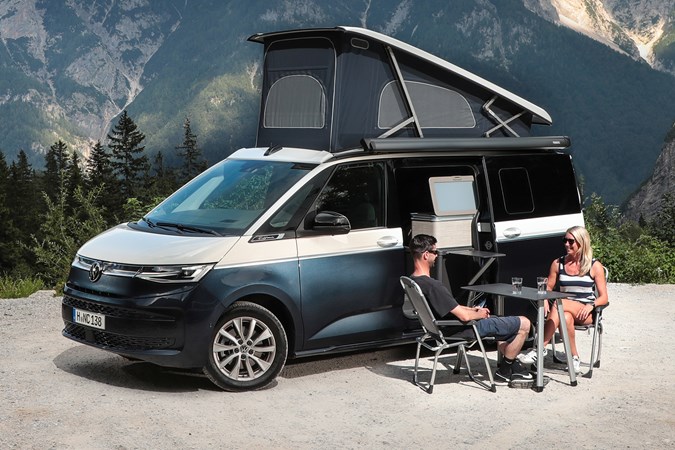
What else should I know?
The Marco Polo still has an ace up its sleeve in the form of self-levelling air suspension. This is a pricey option on an already very expensive campervan, but makes dealing with bumpy campsites an absolute doddle. Volkswagen hasn’t matched this with the new California, so you’ll still have to spend a little time looking for the best possible pitch on arrival.
VW hasn’t released any pricing for the new California yet. We don’t expect it to be shockingly cheap – quite the opposite, in fact – but these machines hold their value extremely well, and the campervan market is booming at the moment.
Also worth noting is the all-new Ford Transit Custom Nugget also due before the end of 2024. This other mainstream rival is still based on a van and will continue to feature an alternative interior layout to the California and Marco Polo. Different strokes for different folks, this, but if you don’t fancy climbing the front seats to reach the top sleep area, as you must in the VW and Mercedes, the Ford could be worth waiting for.
So should you buy a new VW California, or go for the Transit Nugget or Marco Polo instead? Click through to our verdict to find out.




